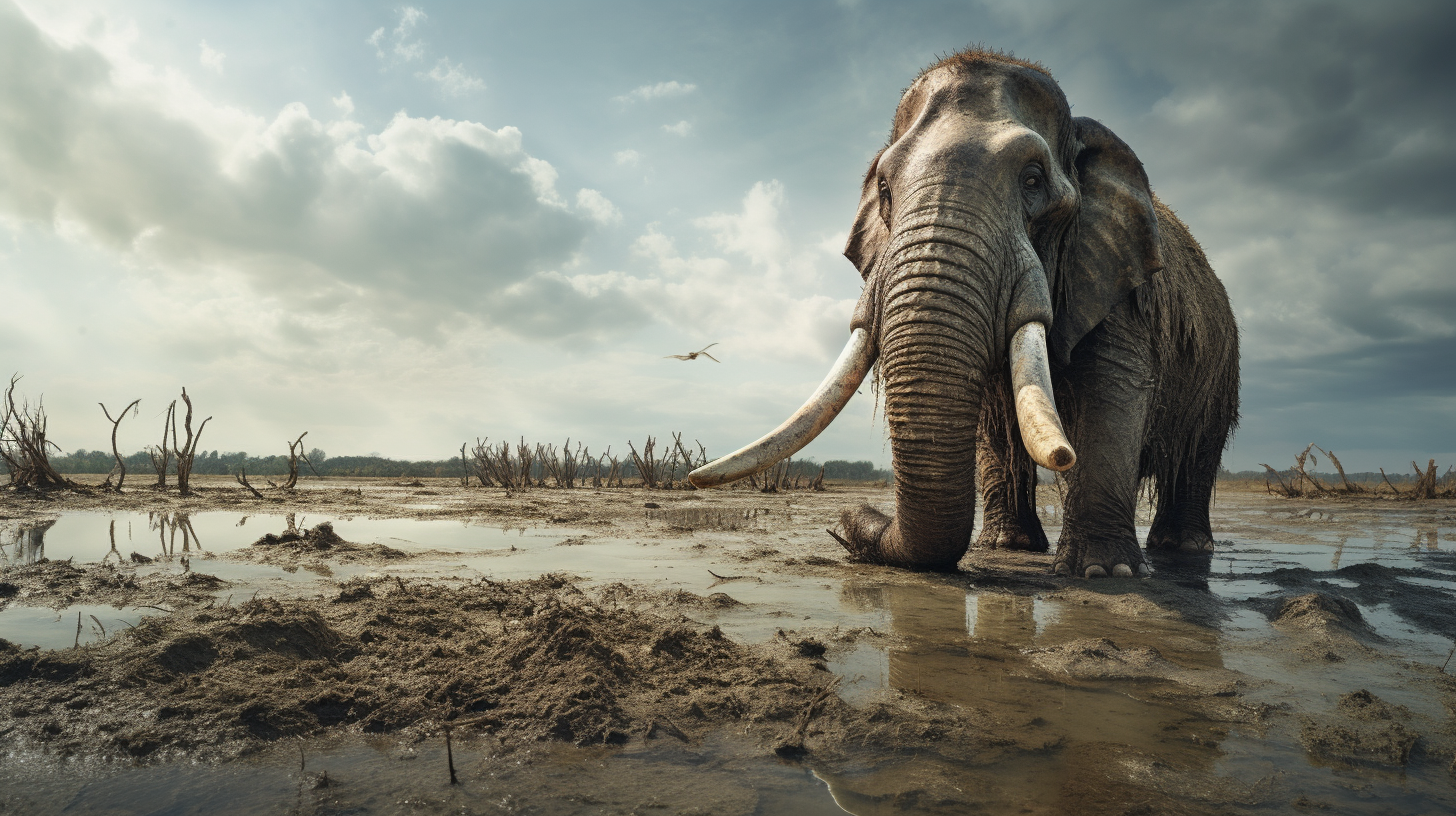In the hauntingly silent expanses of what were once teeming savannahs and dense forests, the earth shudders faintly beneath the fading footsteps of our planet’s mightiest denizens. Elephants, rhinos, and their colossal kin are succumbing to the relentless march forward of an era marked by environmental desecration—a Green Dystopia where hope is as barren as the landscapes these gentle giants meander through.
Imagine colossal beings that have roamed our Earth for millennia, bastions of the wild, now rendered ghosts in the machine of our industrial world. The narrative is grim: climate change, unchecked human expansion, and the dark underbelly of the illegal wildlife trade have conspired to corner these species into the narrow chasm between ‘endangered’ and ‘extinct.’
The evidence is stark and the figures, chilling. Zoologists and biologists sound the alarm bells, with data echoing through decimated habitats that are no longer safe havens but frontlines of a losing battle. The foreboding numbers give credence to lugubrious whispers—a 90% decline in Asian elephants, the haunting loss of the Northern White Rhino, and the precipitating numbers of the African forest elephants.
But what does this mean for the Earth’s behemoths, and where does it leave us, the inheritors of this despoiled legacy? The answer unfolds in a requiem orchestrated by collapsing ecosystems and disrupted food chains—a brutal reminder that the survival of the largest may be an ironic testament to vulnerability, not strength. Climate change has shuttered the great nurseries of biodiversity, while our carbon footprint stamps out an ever-encroaching perimeter, squeezing these majestic species to the very brink. It’s a vicious cycle that accelerates with every felled tree and drained swamp, for these are the lifeblood for Earth’s largest mammals.
Once revered in folklore and religion, elephant herds were synonymous with wisdom and memory, but now, they are beacons of a disappearing world—a world where the flora and fauna have weltered under the oppressive heat of relentless global warming. Tales of these ancient lineages are reduced to muted cries over the cacophony of the Anthropocene—the age where human activity is the most dominant influence on the environment and climate.
The harpoon’s cold lineage continues despite international outcry, as poachers driven by insatiable greed hew into flesh and bone for tusks and horns. The voracious markets of illicit wares deal in dead matter, turning life into trinkets and medicine of dubious efficacy. The misguided perpetuation of demand seals the fate of the elephants and rhinos, as conservationists, armed with science and empathy, fight a war of attrition against poaching syndicates.
And let us not forget the silent behemoths of the oceans—whales that stir the depths with their titanic presence. These mariners of the deep face their own set of challenges, battling against warmer ocean currents and the incessant plunder of the seas. No mammoth mammal, whether land-rover or wave-treader, is immune to the varied assaults enacted by human hands, whether direct or indirect.
Amidst this dirge, the conservation efforts—like those documented amongst the last of the migratory birds—are akin to punching water. The wrangle over policy and red tape, the allure of quick economic gains, and certain disdain for long-term ecological stewardship have ensured that protective measures are often too little, too late. Commitments waver, international accords are stillborn, and the pledges made in pivotal conferences bleed out into parched soil—unkept promises in a world struggling for air.
To be a witness to the oblivion of magnificence is a sorrow so profound that it stains the soul with darkness. Here in the Green Dystopia, extinction is not a mere concept, but a leaden truth that has already claimed innumerable unnamed and unnumbered lives. The Giants in the Mire are no exception, and the silence left in their absence echoes the grave possibilities of our shared future.
Just as the elephants’ graveyard serves as a metaphor for the end, so may these majestic creatures come to symbolize the ruin we’ve authored—a lasting legacy of giants, none greater than mankind’s folly.
